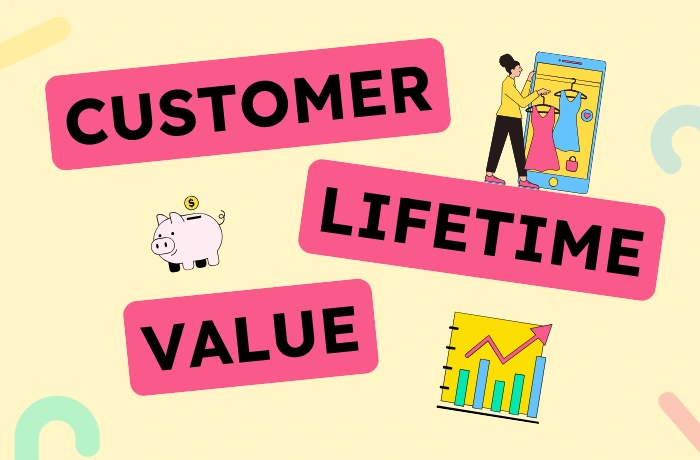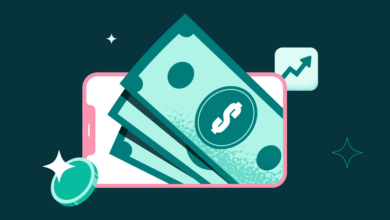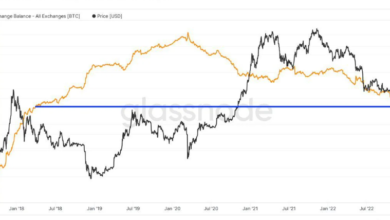How to Calculate Customer Lifetime Value

Understanding and learning how to calculate Customer Lifetime Value (CLV) is pivotal to sustainable growth in today’s competitive marketplace. Whether you’re a seasoned marketer or a brand owner exploring advanced metrics, leveraging CLV can transform your strategy, improve ROI, and unlock new opportunities for long-term success.
This guide breaks down the essentials of CLV, offering practical insights into how to calculate customer lifetime value and its strategic significance to drive your business growth.
What Is Customer Lifetime Value?
Customer Lifetime Value represents the total revenue a customer generates for your business throughout their relationship. It’s not just a metric—it’s a compass guiding you toward more informed decisions about customer acquisition, retention, and growth strategies.
By understanding CLV, you can:
- Prioritize high-value customers for tailored marketing efforts.
- Align your spending on customer acquisition with future returns.
- Foster long-term loyalty while boosting profits.
Why CLV Matters More Than Ever?
In an era of high customer acquisition costs (CAC) and limited attention spans, retaining and nurturing customers is paramount. Here’s why CLV is essential:
- Efficiency in spending: It helps you avoid overspending when acquiring low-value customers.
- Improved forecasting: CLV gives clarity on future revenue streams and financial health.
- Strategic focus: It encourages businesses to invest in experiences that keep customers engaged.
Ignoring CLV leads to wasted resources, underperforming campaigns, and missed opportunities for long-term growth.
How to Calculate Customer Lifetime Value
To fully harness the power of CLV, you must understand how to calculate it accurately. While there are various methods, here’s a simple formula:
CLV = (Average Purchase Value) × (Average Purchase Frequency) × (Customer Lifespan)
Let’s break it down:
- Average Purchase Value (APV): The average revenue you earn from a single transaction.
- Formula: Total Revenue ÷ Number of Purchases
- Average Purchase Frequency (APF): How often a customer buys from you over a set time.
- Formula: Total Purchases ÷ Number of Unique Customers
- Customer Lifespan (CL): The average duration a customer stays with your brand.
- Formula: 1 ÷ Customer Churn Rate
Predictive CLV: Looking to the Future
While historical CLV focuses on past behaviors, predictive CLV uses data models to estimate future customer value. This dynamic approach is especially useful for:
- Forecasting the impact of new campaigns.
- Identifying high-potential customers early.
- Adjusting strategies to meet emerging trends.
To calculate predictive CLV, consider adding:
- Customer Segmentation: Categorize customers by demographics, behavior, or preferences for more granular insights.
- Behavioral Data: Use purchase patterns, website visits, and other engagement metrics.
- Advanced Models: Machine learning tools can refine predictions, incorporating multiple variables, including demographic variables, transactional variables, and product or service usage variables.
Learning how to calculate customer lifetime value is just the first step—its true power lies in how you apply it.
Making CLV Work for You
By leveraging actionable strategies, you can turn insights from CLV into sustainable growth and stronger customer relationships. Here’s how to do it:
1. Optimize Customer Acquisition Costs (CAC)
- Balance your Customer Acquisition Costs (CAC) and CLV for a sustainable strategy.
- Focus on acquiring customers who will provide long-term value.
- Test campaigns targeting different segments to maximize ROI.
2. Enhance Customer Retention
- Invest in loyalty programs and personalized experiences.
- Leverage post-purchase follow-ups to maintain engagement.
- Address customer pain points proactively to reduce churn.
3. Upsell and Cross-Sell Strategically
- Use data to recommend complementary products.
- Target high-value customers with premium offerings.
- Track the success rate of upselling efforts for continuous improvement.
To effectively monitor and improve Customer Lifetime Value (CLV), tracking key benchmarks that provide insights into customer behavior and business performance is essential. High retention rates signify strong brand loyalty, while churn rates highlight how quickly customers exit your ecosystem, signaling areas for improvement. Additionally, measuring customer profitability—revenue generated against costs incurred—helps identify which segments contribute most to your bottom line. These benchmarks are the foundation of a data-driven strategy that maximizes CLV and promotes sustainable growth.
However, common pitfalls can undermine your CLV efforts. Focusing solely on customer acquisition without robust retention strategies often results in high churn, negating your investments. Sticking to outdated models can lead to inaccurate predictions, reducing your ability to make informed decisions.
Moreover, underestimating the impact of customer experience weakens loyalty and diminishes long-term value. By avoiding these mistakes and leveraging CLV insights to refine pricing, allocate marketing budgets, and tailor product development, you can drive business growth while fostering deeper and more meaningful customer relationships.
How to Leverage CLV for Your Brand?
To stay competitive, you need to think beyond just customer acquisition. Make CLV a cornerstone of your business strategy by:
- Regularly reviewing and updating your calculations.
- Aligning your team around CLV-driven goals.
- Experimenting with innovative retention and upselling tactics.
By prioritizing CLV, you secure revenue and build lasting relationships with your customers—an invaluable advantage in today’s market.
Are you ready to transform your strategy and drive growth through Customer Lifetime Value? The time to act is now.
Conclusion
CLV is more than just a number—it’s a strategic tool that unlocks profitability and strengthens customer relationships. By diving deep into your data, focusing on retention, and staying agile with predictive modeling, you’ll create a brand that not only survives but thrives in an ever-changing marketplace.
Start measuring, optimizing, and maximizing your Customer Lifetime Value today. The payoff will be far beyond what you expect.
Nudge’s seamless integrations with leading CRMs, e-commerce platforms, and analytics tools deliver a comprehensive view of customer behavior. By effortlessly syncing data from platforms such as Salesforce, Shopify, and Google Analytics, businesses can calculate Customer Lifetime Value (CLV) with precision while uncovering valuable trends that fuel data-driven, actionable strategies. This holistic approach empowers businesses to make smarter, more informed decisions that drive growth and enhance customer engagement.
Book a demo now to see how Nudge can help you enhance your customer journeys and fuel growth!




